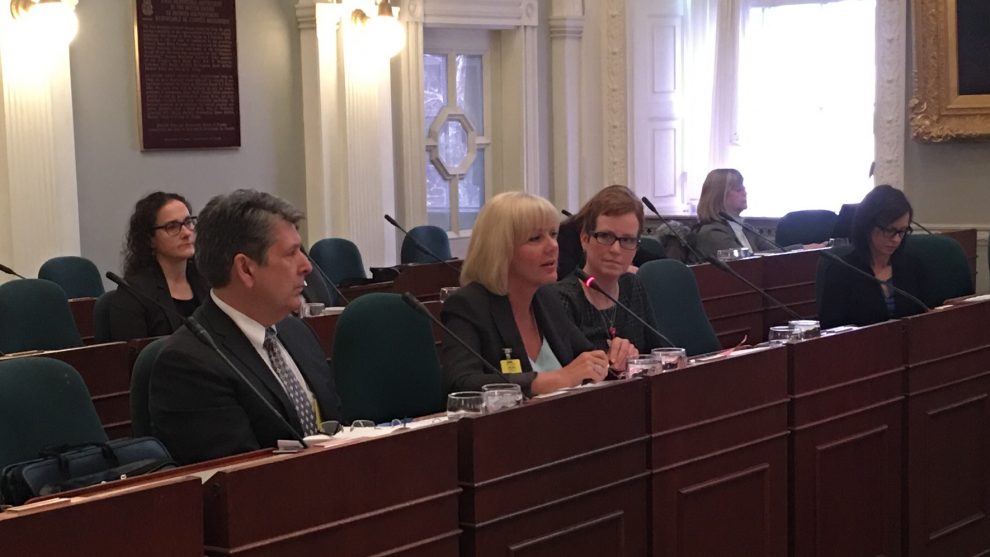Public accounts
2017 a ‘perfect storm’ for tourism in Nova Scotia
Tourism industry sees fourth consecutive year of growth

caption
CEO of Tourism Nova Scotia, Michele Saran (middle), presented visitation numbers and revenue from 2017, along with COO Michael Johnson (left) and manager of research Anna Moran.
caption
CEO of Tourism Nova Scotia, Michele Saran (middle), presents visitation numbers and revenue from 2017.Tourism Nova Scotia presented to the standing committee on public accounts Wednesday, reporting $100 million growth in revenue over the previous year.
Michele Saran, CEO of Tourism Nova Scotia, told a committee of MLAs the official numbers won’t be released until February, but the initial report is positive.
“This year was the perfect storm for tourism,” said Saran.
Preliminary numbers for 2017 were presented to the committee by Anna Moran, Tourism Nova Scotia’s manager of research, planning and decision support. She reported $2.7 billion in revenue, making this the fourth consecutive year of growth for the industry. That growth is $100 million more than last year and $700 million more than 2010.
Moran said it’s a substantial step towards the organization’s goal for 2024. The Ivany Report in 2014 challenged the organization to reach $4 billion in revenue by that year.
Moran said this growth has extended to all areas of the tourism industry, including people coming to the province by car, air travel and ferry. During the summer, hotels and other accommodations were at capacity.
Saran said the organization’s current goal is to bring in more visitors during the tourist off-seasons: fall and winter.
“We need to make winter sexy,” she told the committee.
Hugh MacKay, Liberal MLA for Chester-St. Margaret’s, specifically asked Saran what they are doing to reach this winter goal and their financial goal for 2024.
Both Saran and Moran outlined some opportunities, including discussion about Airbnb and specialty experiences, like dining on the ocean floor, but stressed that increasing air travel traffic is a priority.
Tourism Nova Scotia is currently working on targeting visitors from overseas, specifically places where the province already sees some traffic: Germany, China and the U.K. However, Saran said they are facing the problem of high landing fees and competition for carriers. One incentive the organization is considering is an air access fund, which would allow Halifax Stanfield International Airport to waive landing fees.
“We recently got a carrier from the U.K. and we saw what I think was a $10 million increase (in revenue) right off the bat,” said Saran.
Saran said she’s confident in the current goals, based on traveller psychographic research, a study which takes into account what people want rather than who they are.
“We know people who come here want an authentic experience,” said Saran. “That’s definitely something we can give them.”

